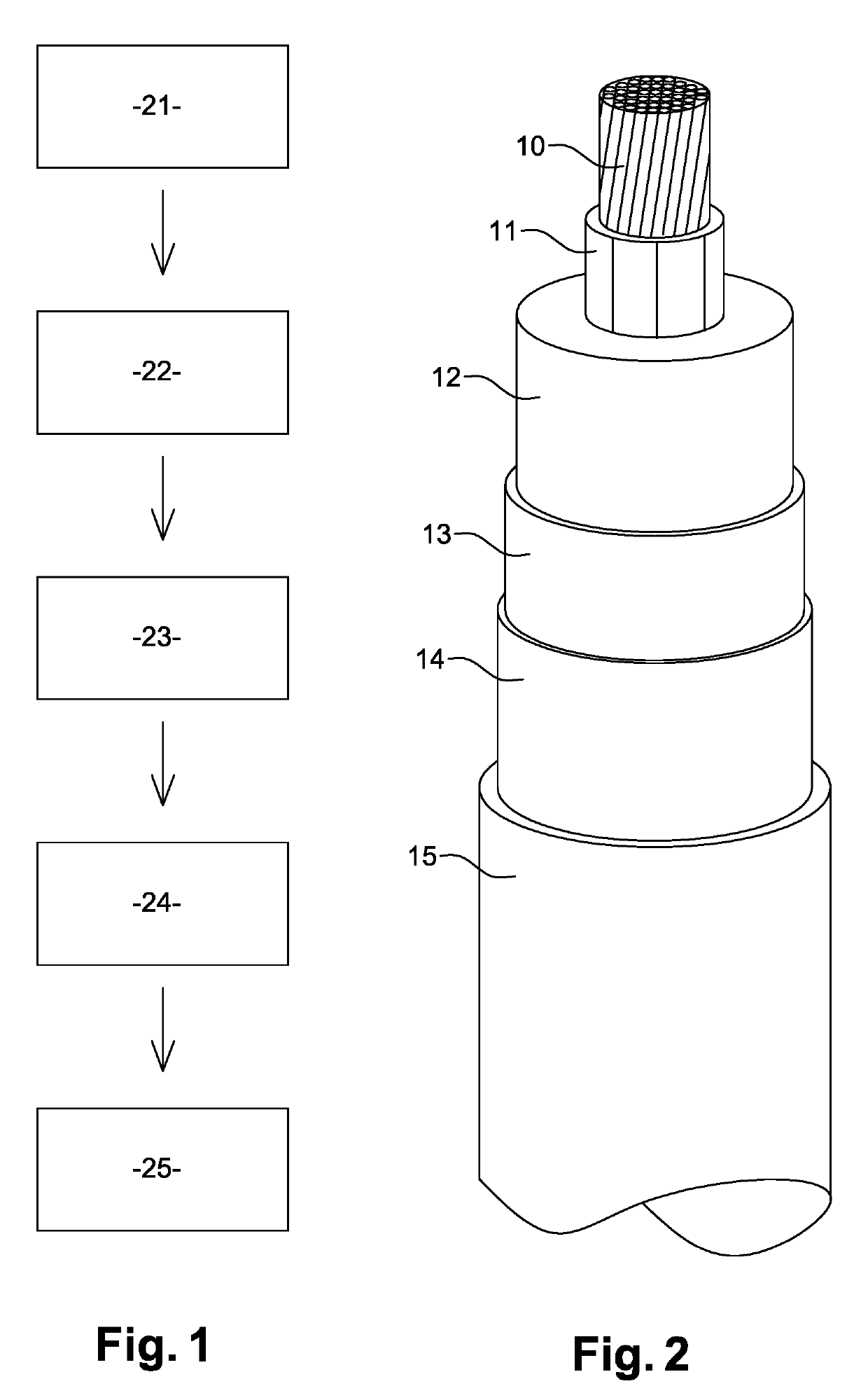Method for providing an insulated electric cable or DC termination or joint
a technology of dc termination and insulated electric cable, which is applied in the direction of plastic/resin/waxes insulators, cable/conductor manufacturing, organic insulators, etc., can solve the problems of space charge accumulation, inability to obtain the full potential of full-size cables, and use of thicker and/or more expensive materials in cable insulation. , to achieve the effect of stable and consistent dielectric properties, low tendency to space charge accumulation, and high and consistent electric strength
- Summary
- Abstract
- Description
- Claims
- Application Information
AI Technical Summary
Benefits of technology
Problems solved by technology
Method used
Image
Examples
Embodiment Construction
[0040]A method for production of an insulated electric high voltage DC cable according to an embodiment of the present invention will now be described with reference to FIGS. 1 and 2. The latter Figure shows the insulated electric high voltage DC cable in a section view. The DC cable comprises from the center and outwards: a stranded multi-wire conductor 10, a first extruded semi-conducting shield 11 disposed around and outside the conductor 10, an extruded polyethylene based conductor insulation 12 with an extruded, cross-linked composition as further described below, a second extruded semi-conducting shield 13 disposed outside the conductor insulation 12, and an outer covering or sheath 15 arranged outside the polymer based insulation system.
[0041]As shown in FIG. 3, the multi-wire conductor 10 comprises, in cross-section, a central circular wire 101 that is surrounded by several concentric layers of adjacent quadrangular wires 102. Every layer of adjacent quadrangular wires 102 f...
PUM
| Property | Measurement | Unit |
|---|---|---|
| softening temperature | aaaaa | aaaaa |
| temperature | aaaaa | aaaaa |
| temperature | aaaaa | aaaaa |
Abstract
Description
Claims
Application Information
 Login to View More
Login to View More - R&D
- Intellectual Property
- Life Sciences
- Materials
- Tech Scout
- Unparalleled Data Quality
- Higher Quality Content
- 60% Fewer Hallucinations
Browse by: Latest US Patents, China's latest patents, Technical Efficacy Thesaurus, Application Domain, Technology Topic, Popular Technical Reports.
© 2025 PatSnap. All rights reserved.Legal|Privacy policy|Modern Slavery Act Transparency Statement|Sitemap|About US| Contact US: help@patsnap.com


